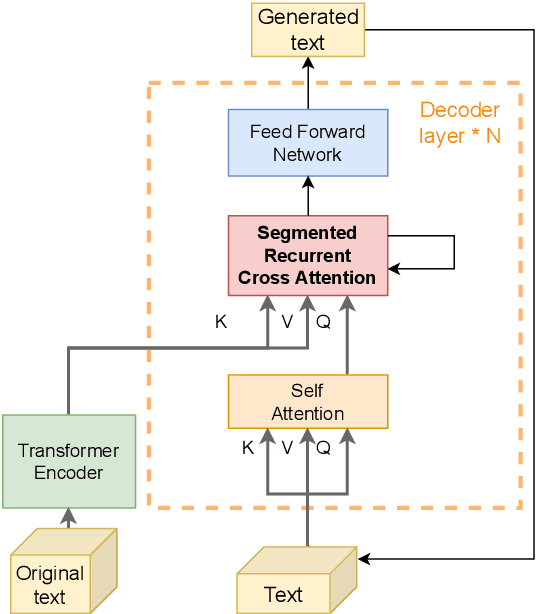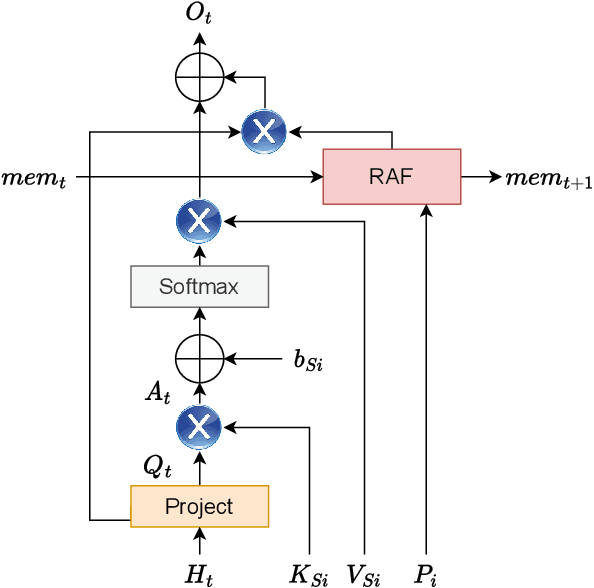Segmented Recurrent Transformer: An Efficient Sequence-to-Sequence Model
Paper and Code
May 24, 2023



Transformers have shown dominant performance across a range of domains including language and vision. However, their computational cost grows quadratically with the sequence length, making their usage prohibitive for resource-constrained applications. To counter this, our approach is to divide the whole sequence into segments. The information across segments can then be aggregated using neurons with recurrence leveraging their inherent memory. Such an approach leads to models with sequential processing capability at a lower computation/memory cost. To investigate this idea, first, we examine the effects of using local attention mechanism on the individual segments. Then we propose a segmented recurrent transformer (SRformer) that combines segmented attention with recurrent attention. It uses recurrent accumulate and fire (RAF) layers to process information between consecutive segments. The loss caused by reducing the attention window length is compensated by updating the product of keys and values with RAF neurons' inherent recurrence. The segmented attention and lightweight RAF gates ensure the efficiency of the proposed transformer. We apply the proposed method to T5 and BART transformers. The modified models are tested on summarization datasets including CNN-dailymail and XSUM. Notably, using segmented inputs of different sizes, the proposed model achieves 4-19% higher ROUGE1 scores than the segmented transformer baseline. Compared to full attention, the proposed model largely reduces the complexity of cross attention and results in around 40% reduction in computation cost.
 Add to Chrome
Add to Chrome Add to Firefox
Add to Firefox Add to Edge
Add to Edge